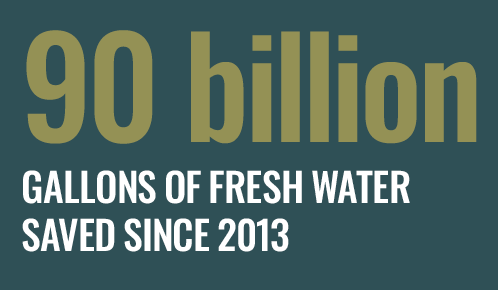From profit to planet: how big-name brands are redefining responsibility

From resource extraction to energy-guzzling production lines, mobile phone and tech manufacturers might not be the poster child for eco-friendliness, either; but many, including both Samsung and Apple, are taking notable strides to reduce their impact.In April, Apple announced it had cut its global greenhouse gas emissions by more than 60 percent compared to 2015 levels, marking significant progress towards its 2030 goal of becoming carbon neutral.

The brand introduced its first fully carbon neutral products in 2023 in the form of various Apple Watches, achieving a 75 percent reduction in emissions (with the remaining emissions offset via carbon credits invested in nature-based projects). Last October, a carbon neutral Mac mini was rolled out, made with over 50 percent recycled content, while the new MacBook Air, introduced in early 2025, uses over 55 percent recycled content.
All Apple-designed batteries are now made from 99 percent recycled cobalt – and for those looking to get rid of their old devices, Apple Trade In allows customers to bring in old Apple products to be recycled in exchange for credit. The recent Environment Progress Report outlined a series of other milestones – not least having powered every Apple facility with renewable energy since 2018. “That progress is quickly making its way across our global supply chain, and today, our suppliers now support more than 17.8 gigawatts of clean energy around the world,” wrote Lisa Jackson, Vice President of Environment, Policy and Social Initiatives, in the report.
“We are also investing in clean energy projects to match the energy our customers use to charge their devices,” she said, pointing to the company’s Power for Impact programme, which includes renewable energy projects in the Philippines, Thailand, South Africa and beyond. “By expanding access to safe, reliable electricity, we can protect the planet and support the communities most significantly impacted by climate change.”
Apple is also investing in carbon removal projects through its Restore Fund, whose projects include reforesting the Atlantic Forest in Brazil, now “filled with native tree species that could have been lost forever,” in Jackson’s words.
Waste issues are meanwhile being addressed under a Zero Waste programme; in 2024, participating suppliers redirected around 600,000 metric tons of waste from landfills. The company’s Supplier Clean Water Programme has also seen more than 90 billion gallons of fresh water saved since it was introduced in 2013, promoting water reuse at facilities around the world.
There is still more to be done – not least around flying; Apple’s corporate travel emissions were down 31 percent in 2023 compared to 2019, but this lags behind the average reduction seen by other major tech companies, according to a Travel Smart campaign by Transport and Environment.
Nonetheless, the tech giant is certainly a promising example, using innovation to drive sustainability in characteristically Apple fashion, all while benefitting the bottom line.
Revenue grew by more than 65 percent in the same period that emissions fell by 60 percent, showing that profitability and sustainability can go hand in hand if done in the right way – and as we move into the future, and watch as Gen Z takes to the stage, the first might just well become the key to achieving the second.



